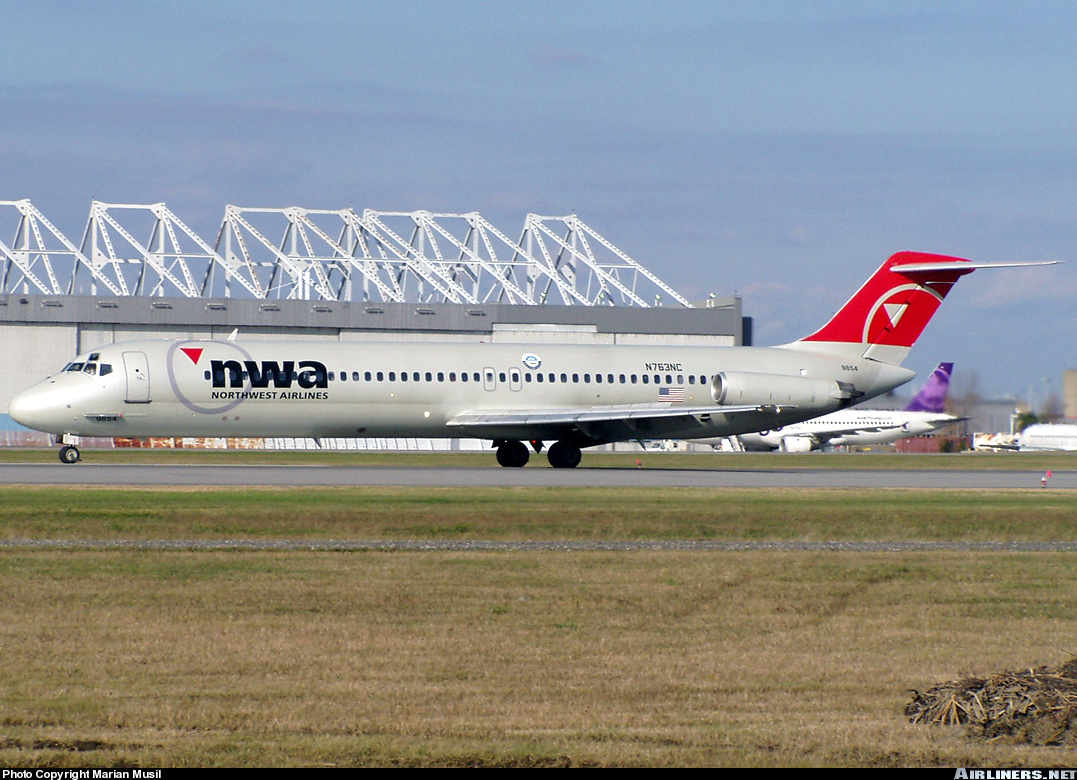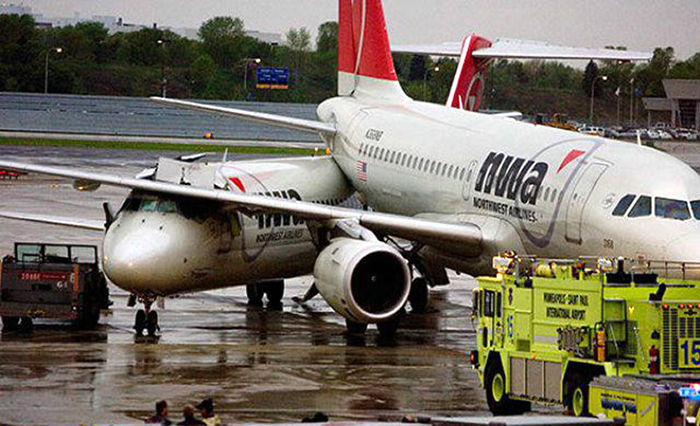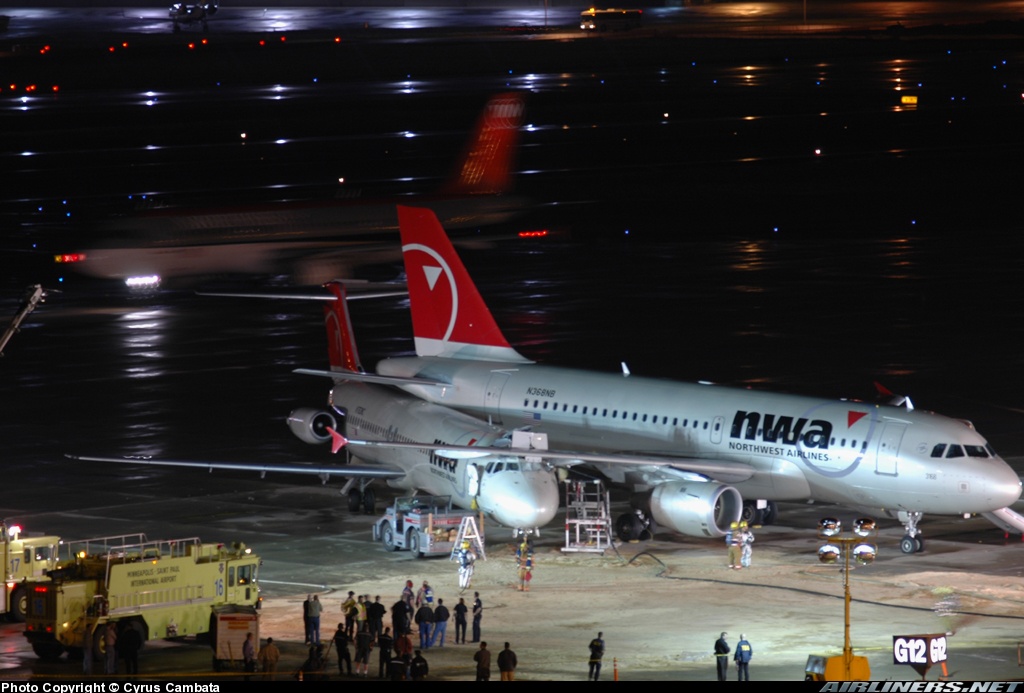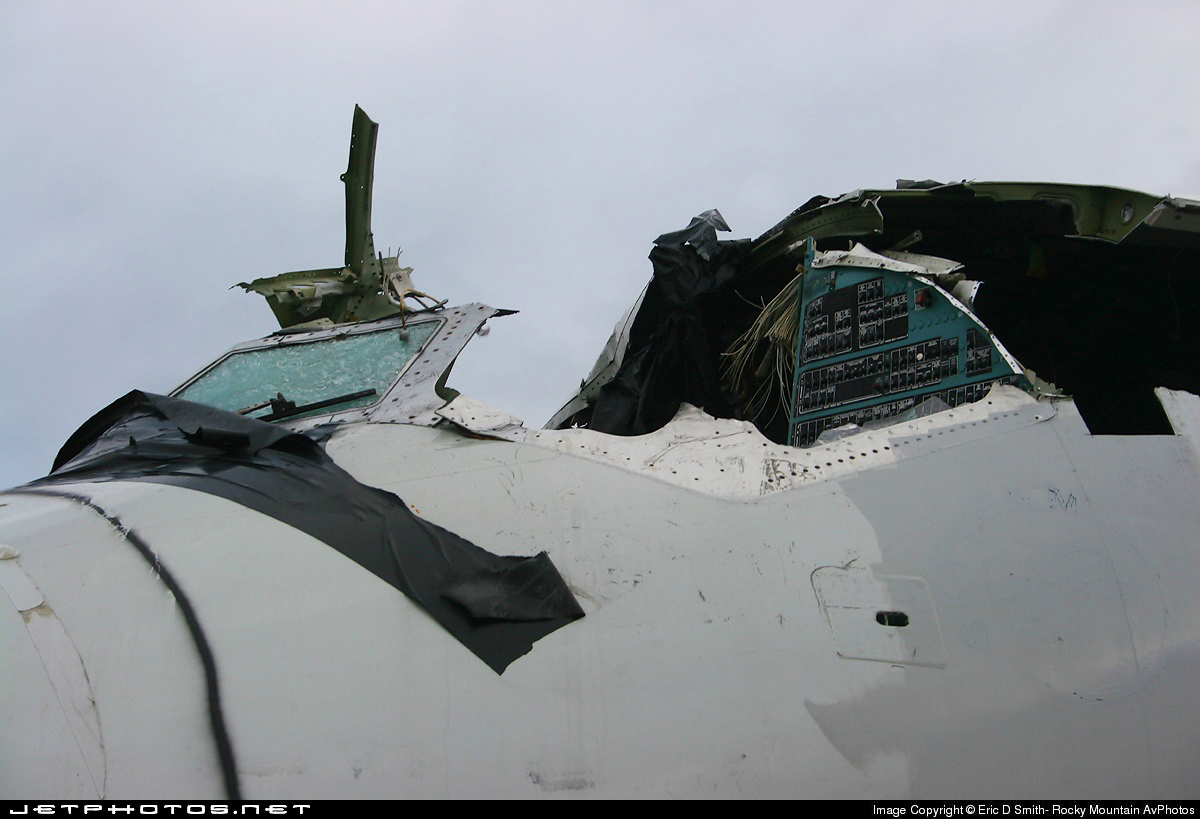Country
Operator Image

Crash of a Boeing 747-251B in Agana
Date & Time:
Aug 19, 2005 at 1418 LT
Registration:
N627US
Survivors:
Yes
Schedule:
Tokyo - Agana
MSN:
21709
YOM:
1979
Flight number:
NW074
Crew on board:
16
Crew fatalities:
Pax on board:
324
Pax fatalities:
Other fatalities:
Total fatalities:
0
Captain / Total hours on type:
7850.00
Copilot / Total hours on type:
8695
Aircraft flight hours:
95270
Circumstances:
During the initial approach, the red GEAR annunciator light above the gear lever illuminated, and the landing gear warning horn sounded after the gear handle was selected down and the flaps were selected to 25 degrees. During the go-around, the captain asked the second officer (SO), "what do you have for the gear lights?" The SO responded, "four here." When all gear are down and locked on the Boeing 747-200, the landing gear indication module located on the SO’s instrument panel has five green lights: one nose gear light above four main landing gear lights. The crew then read through the "Red Gear Light Remains On (After Gear Extension)" emergency/abnormal procedure from the cockpit operations manual to troubleshoot the problem. Although the checklist twice presented in boldface type that five lights must be present for the gear to be considered down and locked, the crew did not verbalize the phrase either time. The captain did not directly request a count, and the SO did not verbally confirm, the number of gear down annunciator lights that were illuminated; instead, the flight crew made only general comments regarding the gear, such as "all gear," "all green," or "got 'em all." Because the crew believed that all of the gear annunciator lights were illuminated, they considered all gear down and locked and decided not to recycle the landing gear or attempt to extend any of the gear via the alternate systems before attempting a second approach. During all communications with air traffic control, the flight crew did not specify the nature of the problem that they were troubleshooting. Although the checklist did not authorize a low flyby, if the flight crewmembers had verbalized that they had a gear warning, the controller most likely would have been able to notify the crew of the nose gear position before the point at which a go-around was no longer safe. Multiple gear cycles were conducted after the accident, and the nose gear extended each time with all nose gear door and downlock indications correctly displayed on the landing gear indication module. Post accident examination of the nose gear door actuator found that one of the two lock keys was installed 180 degrees backward. Although this improper configuration could prevent proper extension of the nose gear, the actuator had been installed on the accident airplane since 2001 after the actuator was overhauled by the operator. No anomalies were found with the landing gear indication module, the nose gear-operated door sequence valve, and the nose/body landing gear selector valve.
Probable cause:
The flight crews' failure to verify that the number of landing gear annunciations on the second officer’s panel was consistent with the number specified in the abnormal/emergency procedures checklist, which led to a landing with the nose gear retracted.
Final Report:
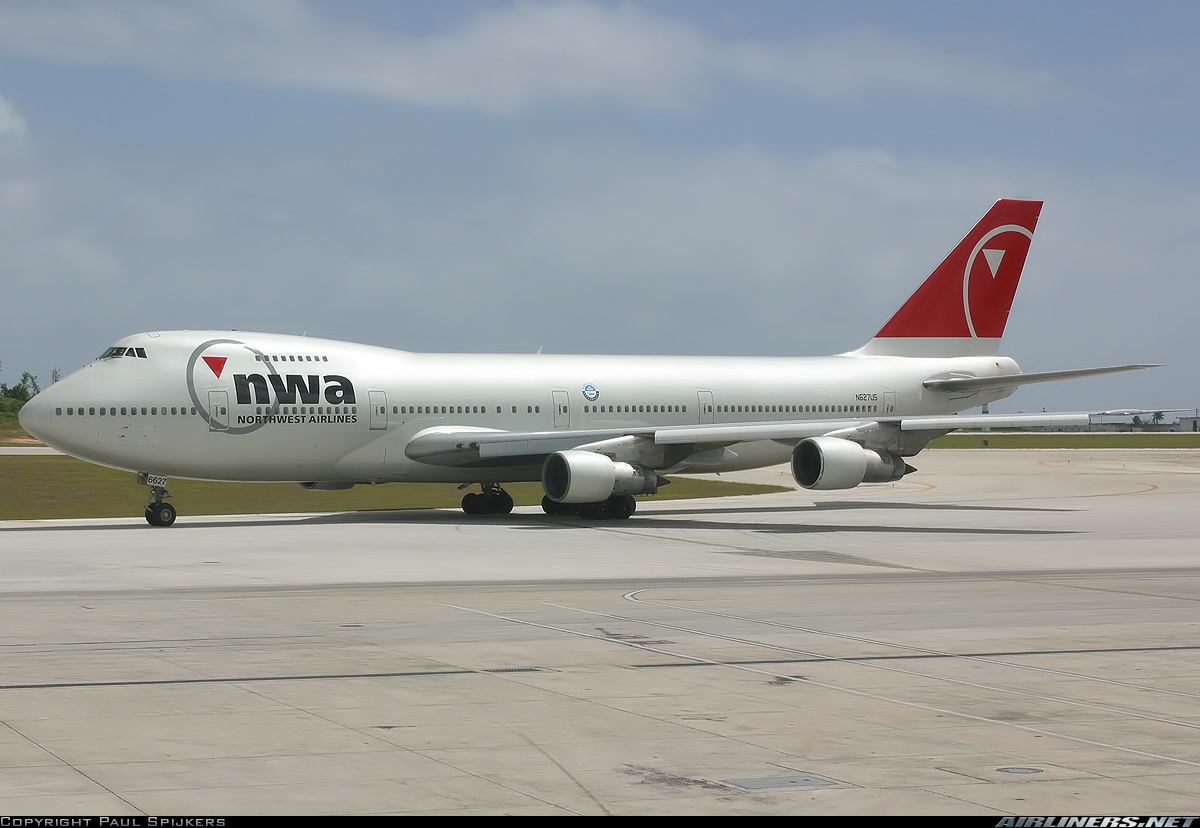
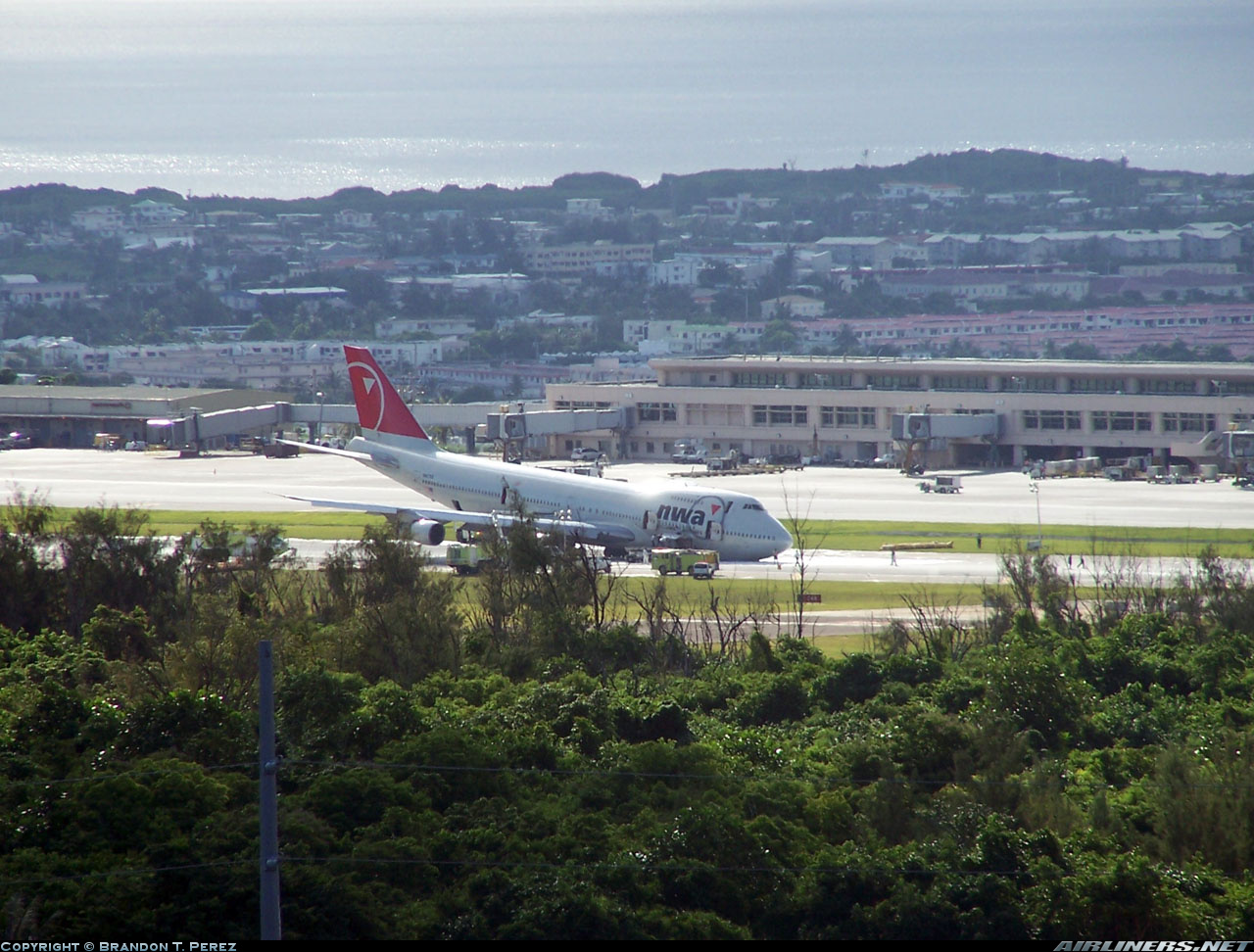
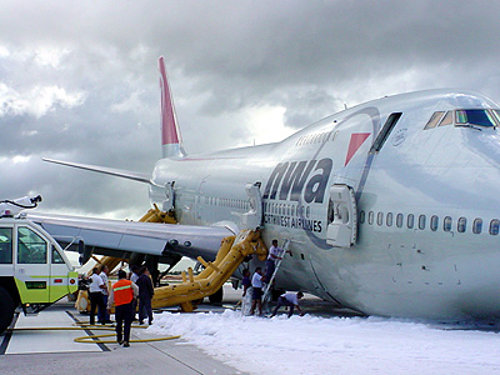
Ground accident of a Douglas DC-9-51 in Minneapolis
Date & Time:
May 10, 2005 at 1936 LT
Registration:
N763NC
Survivors:
Yes
Schedule:
Columbus - Minneapolis
MSN:
47716/822
YOM:
1976
Flight number:
NW1495
Crew on board:
5
Crew fatalities:
Pax on board:
94
Pax fatalities:
Other fatalities:
Total fatalities:
0
Captain / Total hours on type:
6709.00
Copilot / Total hours on type:
3985
Aircraft flight hours:
67268
Aircraft flight cycles:
66998
Circumstances:
The DC-9 was taxiing to the gate area when it collided with a company A319 that was being pushed back from the gate. Prior to arriving at the destination airport, the DC-9 experienced a loss of hydraulic fluid from a fractured rudder shutoff valve located in the DC-9's right side hydraulic system. The left side hydraulic system had normal hydraulic pressure and quantity throughout the flight. The flightcrew elected to continue to the scheduled destination and declared an emergency while on approach to the destination airport. After landing, the emergency was negated by the flight crew and the airplane taxied to the gate. Flight data recorder information indicates the left engine, which provides power for the left hydraulic system, was shut down during taxi. The captain stated he did not remember shutting the left engine down, and that if he had, it would have been after clearing all runways. The first officer stated that he was unaware that the left engine was shut down. Upon arrival at the gate with the left engine shut down and no hydraulic pressure from the left system and a failure of the right hydraulic system, the airplane experienced a loss of steering and a loss of brakes. The flightcrew requested company maintenance to chock the airplane since they were unable to use brakes to stop the airplane. The crew said they were going to keep the "...engines running in case we have to use reversers..." The airplane began to roll forward and the captain applied reverse thrust but the reversers did not deploy. The airplane impacted the A319 with a speed of approximately 15.65 miles per hour to 16.34 miles per hour. Evacuation of the DC-9 was completed approximately 5:22 minutes after the collision and evacuation of the A319 occurred approximately 13:08 minutes after the collision. Examination of the left hydraulic system revealed no anomalies and examination of the right hydraulic system revealed a fractured rudder shutoff valve that displayed features consistent with fatigue. Following the accident, the airplane manufacturer issued a service letter pertaining to the replacement of the rudder shutoff valve based upon reliability information that was reported to them. The number of reports was greater than that of the Federal Aviation Administration's Service Difficulty Reports database, and less than the operators records.
Probable cause:
The Captain's decision to shutdown the left engine during taxi with no hydraulic pressure on the right side hydraulic system to effectively operate the brakes, steering, or thrust reversers. A factor was the fatigue fracture of the rudder shutoff valve which resulted in the loss of right side hydraulic pressure.
Final Report:
